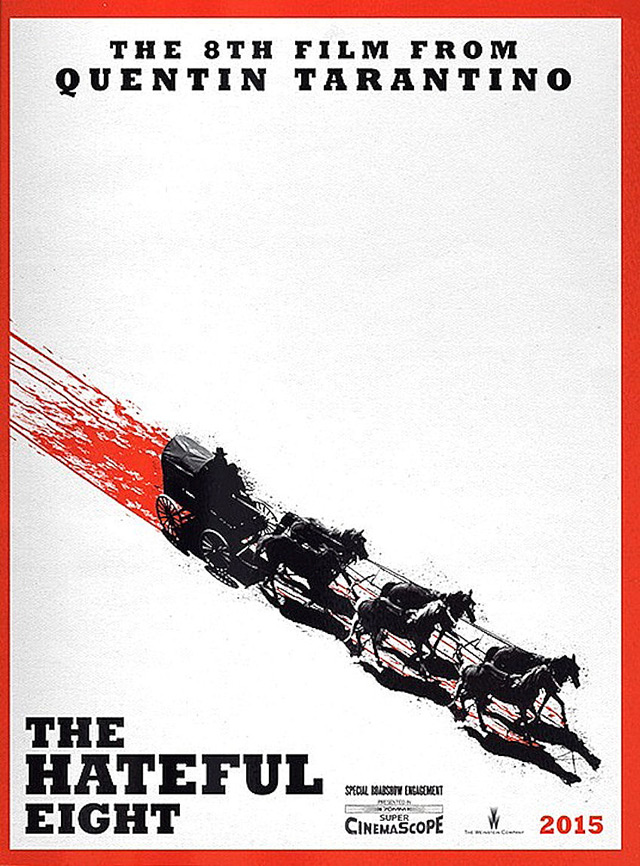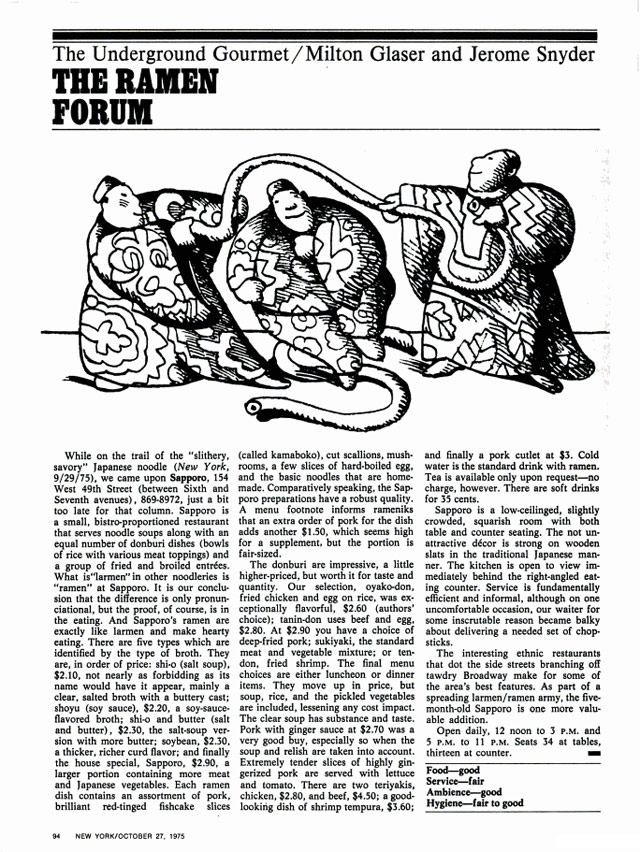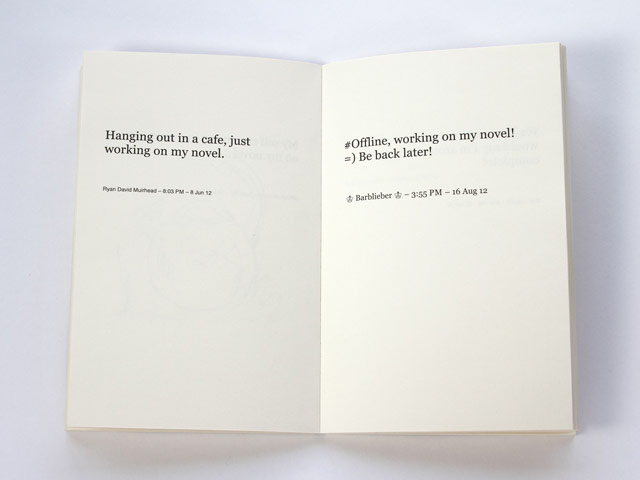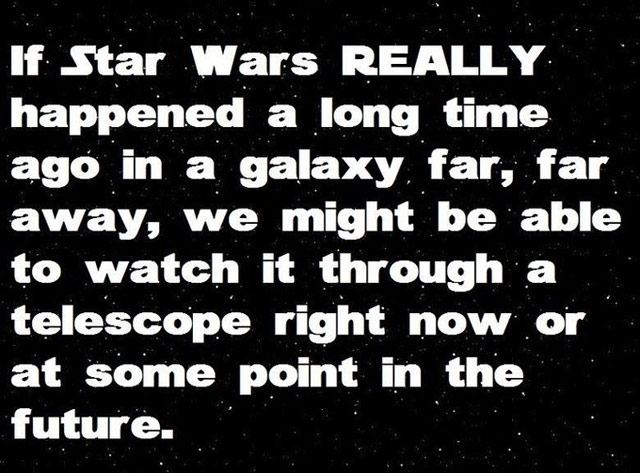Blogging
I knew if I waited around long enough, blogging would be the hot new thing again: Sippey, Steele, Spiers.



This site is made possible by member support. 💞
Big thanks to Arcustech for hosting the site and offering amazing tech support.
When you buy through links on kottke.org, I may earn an affiliate commission. Thanks for supporting the site!
kottke.org. home of fine hypertext products since 1998.
I knew if I waited around long enough, blogging would be the hot new thing again: Sippey, Steele, Spiers.
This year, your back-to-school shopping may have included more devices and downloads than pieces of attire. According to the NYT, today’s teenagers favor tech over clothes. One retail analysts explains how his focus groups go these days: “You try to get them talking about what’s the next look, what they’re excited about purchasing in apparel, and the conversation always circles back to the iPhone 6.”
A plan used to be simple: you would agree to meet someone at a certain time and place and then you would meet them there and then. Now, a plan is subject to all sorts of revisions because “cellphones make people flaky as #%@*”.
A Plan: Once heralded as a firm commitment to an event in the future, a plan is now largely considered to be a string of noncommittal text messages leading up to a series of potential, though unlikely, events.
A Cellphone: Your primary device for making plans. More specifically, the medium with which most plans are conceived and later altered. It’s imperative that you keep your cellphone on your person at all times, as you can expect all plans to dissolve into an amorphous cloud upon conception.
I have experienced this recently and am convinced this is partially a generational thing. If you spent any part of your 20s without a cellphone, the sort of thing described in the video happens a lot less. But this practice is also contagious, as most social behavior is…if you witness friends doing it, over time it becomes more acceptable to do it yourself.
Advice from Tom Mylan, The Meat Hook’s head butcher, about how to create your own custom burger blend for top notch burgers at home.
Don’t believe the “bedazzled blend” burger hype. Using fancy cuts of beef is not important and kind of a bullshit move, according to Mylan. What is important is making sure the meat is high-quality and comes from mature animals, and that your blend has the right fat content.
Use cheaper cuts of beef from harder-working muscles, like chuck or round. Why? These cuts have more myoglobin, Mylan says, and myoglobin is what gives beef its “beefy” flavor and red color. Each cut will contribute its own flavor and textural nuances, and you can play around with different cuts to bolster the flavors you prefer.
And holy cow! (Ahem.) He suggests using a hamburger patty maker, which I didn’t even know existed. $13! I’m totally getting one and trying this.
Hmm, this is interesting. Recent studies suggest that food allergies may be caused by the absense of certain intestinal bacteria…in part due to increased use of antibiotics in very young children.
Food allergies have increased about 50% in children since 1997. There are various theories explaining why. One is that the 21st century lifestyle, which includes a diet very different from our ancestors’, lots of antibiotic use, and even a rise in cesarean section deliveries, has profoundly changed the makeup of microbes in the gut of many people in developed countries. For example, the average child in the United States has taken three courses of antibiotics by the time he or she is 2 years old, says Martin Blaser, an infectious disease specialist and microbiologist at New York University in New York City. (See here for more on the reach of microbiome research these days.)
Cathryn Nagler, an immunologist at the University of Chicago in Illinois, has spent years probing links between the immune system, intestinal bacteria, and the onset of allergies. Back in 2004, she and her colleagues reported that wiping out gut bacteria in mice led to food allergies. Since then, Nagler has continued trying to understand which bacteria offer allergy protection and how they accomplish that.
From the excellent Art of the Title, an interview with Angus Wall, the creative director responsible for the opening titles of Game of Thrones.
Basically, we had an existing map of Westeros and a xeroxed hand drawn map of Essos - both done by George R. R. Martin - and I took those into Photoshop and played with their scale until they lined up perfectly. The actual dimensions, the locations and their placement, and the different terrains are all based strictly on George R. R. Martin’s maps. It was really important that we stay as absolutely true to the books as possible because of the ardent fans out there.
Wall also works as an editor, often on David Fincher films. He won two Oscars for editing The Social Network and The Girl with the Dragon Tattoo.
I wasn’t expecting too much of this video about how to eat sushi, but it’s actually pretty good. It features Naomichi Yasuda of the highly regard Sushi Yasuda in Manhattan making sushi for a newbie and telling him how it should be eaten.
This Old House + Jiro Dreams of Sushi = this video.
Update: Another perspective on how sushi should be eaten comes from Tom Downey, who shares the 10 commandments of the owner of Tokyo’s Yajima Sushi.
There were open spots at the counter. But the chef, Susumu Yajima, instructed me to take a seat nearby and wait. Eventually I was summoned to a place directly in front of him, and the attack began: Piece after piece in rapid succession, as Yajima barked orders at me.
“Eat now!” he said, milliseconds after passing me a glistening slice of buri (amberjack) atop shari (the finger of rice that forms the base of nigiri sushi). “Use your hand!” he upbraided me, as I reached for my chopsticks. He even instructed me to half-chew one piece before washing it down with sake.

Spanning from comets in the south to the termination shock zone in the northern part of the country, The Sweden Solar System is a scale model of the solar system that spans the entire country of Sweden, the largest such model in the world.
The Sun is represented by the Ericsson Globe in Stockholm, the largest hemispherical building in the world. The inner planets can also be found in Stockholm but the outer planets are situated northward in other cities along the Baltic Sea.
Anthony Richardson (previously, previouslyer, previouslyest) describes a NASCAR race from the British perspective.
Now for the bumper view! Wow, the easiest way to work out what on Earth is going on. Oh, the car’s giving the one in front a little sniff. Ah, they’re a bit like dogs, aren’t they? Petrol dogs.
That’s the somewhat unusual name of a feature-length documentary about world-class stone skippers. Here’s the trailer:
I love skipping stones. When I see flat water and flat rocks, I can’t not do it. They have to change that name though. They were likely going for “Jiro Dreams of Sushi” but really missed the mark. Oh, and they’re raising funds on Kickstarter to finish the film.
The zen art of stone skipping meets the competitive nature of mankind in this feature-length documentary. Set in the world of professional stone skipping, this film will examine the competitive nature of mankind. World Records will be tested, rivalries will fester, and a sport will rise from the ashes of obscurity.
Update: The full-length movie is now available for rent or purchase on Vimeo.
Holy informational rabbit hole, Batman! Wikipedia has a page that is a List of lists of lists.
This article is a list of articles comprising a list of things that are themselves lists of things, such as the lists of lists listed below.
Inception horn! Includes such lists of lists as Lists of fictional Presidents of the United States, Ranked lists of Chilean regions, Lists of black people, and Lists of nuclear disasters and radioactive incidents. (via @sampotts)
When he was 20, Christopher Knight walked into the woods of Maine and didn’t speak to another soul (save a quick “hi” to a passing hiker) for 27 years, during which he lived not off the land but off the propane tanks and freezers of his neighbors.
He started to speak. A little. When Perkins-Vance asked why he didn’t want to answer any questions, he said he was ashamed. He spoke haltingly, uncertainly; the connection between his mind and his mouth seemed to have atrophied from disuse. But over the next couple of hours, he gradually opened up.
His name, he revealed, was Christopher Thomas Knight. Born on December 7, 1965. He said he had no address, no vehicle, did not file a tax return, and did not receive mail. He said he lived in the woods.
“For how long?” wondered Perkins-Vance.
Knight thought for a bit, then asked when the Chernobyl nuclear-plant disaster occurred. He had long ago lost the habit of marking time in months or years; this was just a news event he happened to remember. The nuclear meltdown took place in 1986, the same year, Knight said, he went to live in the woods. He was 20 years old at the time, not long out of high school. He was now 47, a middle-aged man.
Make sure you read until the end. This isn’t a just-the-facts-ma’am piece on some hermit; it turns out that someone who has spent almost three decades alone has something insightful to say about being human.
Update: The author of the GQ piece is coming out with a book in March about Knight called The Stranger in the Woods: The Extraordinary Story of the Last True Hermit.
Based on extensive interviews with Knight himself, this is a vividly detailed account of his secluded life — why did he leave? what did he learn? — as well as the challenges he has faced since returning to the world. It is a gripping story of survival that asks fundamental questions about solitude, community, and what makes a good life, and a deeply moving portrait of a man who was determined to live his own way, and succeeded.
Surgeon and New Yorker writer Atul Gawande has a new book about death coming out in October called Being Mortal.
Medicine has triumphed in modern times, transforming birth, injury, and infectious disease from harrowing to manageable. But in the inevitable condition of aging and death, the goals of medicine seem too frequently to run counter to the interest of the human spirit. Nursing homes, preoccupied with safety, pin patients into railed beds and wheelchairs. Hospitals isolate the dying, checking for vital signs long after the goals of cure have become moot. Doctors, committed to extending life, continue to carry out devastating procedures that in the end extend suffering.
Gawande, a practicing surgeon, addresses his profession’s ultimate limitation, arguing that quality of life is the desired goal for patients and families. Gawande offers examples of freer, more socially fulfilling models for assisting the infirm and dependent elderly, and he explores the varieties of hospice care to demonstrate that a person’s last weeks or months may be rich and dignified.
This piece Gawande wrote for the New Yorker in 2010 was probably the genesis of the book. I maintain a very short list of topics I’d like to write books about and death is one of them. Not from a macabre Vincent Price / Tim Burton perspective…more like this stuff. Dying is something that everyone has to deal with many times during the course of their life and few seem to have a handle on how to deal with it. That’s fascinating. Can’t wait to read Gawande’s book.
A short appreciation of the Steadicam and its inventor, Garrett Brown. (Brown also invented the football SkyCam.) Features footage from Rocky, Return of the Jedi, and The Shining.
From Wikipedia:
The Steadicam was first used in the Best Picture-nominated Woody Guthrie biopic Bound for Glory (1976), debuting with a shot that compounded the Steadicam’s innovation: cinematographer Haskell Wexler had Brown start the shot on a fully elevated platform crane which jibbed down, and when it reached the ground, Brown stepped off and walked the camera through the set. This technically audacious and previously impossible shot created considerable interest in how it had been accomplished, and impressed the Academy enough for Wexler to win the Oscar for Best Cinematography that year. It was then used in extensive running and chase scenes on the streets of New York City in Marathon Man (1976), which was actually released two months before Bound for Glory. It landed a notable third credit in Avildsen’s Best Picture-winning Rocky (1976), where it was an integral part of the film’s Philadelphia street jogging/training sequences and the run up the Art Museum’s flight of stairs, as well as the fight scenes (where it can even be plainly seen in operation at the ringside during some wide shots of the final fight). Garrett Brown was the Steadicam operator on all of these.
The Shining (1980) pushed Brown’s innovations even further, when director Stanley Kubrick requested that the camera shoot from barely above the floor. This prompted the innovation of a “low mode” bracket to mount the top of a camera to the bottom of an inverted post, which substantially increased the creative angles of the system, which previously could not go much lower than the operator’s waist height. This low-mode concept remains the most important extension to the system since its inception.
(via @robinsloan)
Update: Here’s Brown talking about the Steadicam and his career. And here’s Stanley Kubrick’s introduction to the Steadicam, via a letter from a colleague. (via @poritsky & @LettersOfNote)
New work from Olafur Eliasson: he installed a riverbed in the Louisiana Museum of Modern Art in Denmark.

Automata is a film directed by Gabe Ibáñez in which robots become sentient and…do something. Not sure what…I hope it’s not revolt and try to take over the world because zzzz… But this movie looks good so here’s hoping.
Jacq Vaucan, an insurance agent of ROC robotics corporation, routinely investigates the case of manipulating a robot. What he discovers will have profound consequences for the future of humanity.
Automata will be available in theaters and VOD on Oct 10. (via devour)
As far as these things go, this video of the Muppets singing So What’cha Want by the Beastie Boys is pretty near perfect.
See also The Muppets singing Kanye West’s Monster and the Sesame Street gang doing the Beastie Boys’ Sure Shot. Oh, and the classic Bert & Ernie Ante Up rap video:
(via subtraction)

I do not officially have a bucket list1 but if I did have one, watching a total solar eclipse would be on it. Was just talking about it the other day in fact. Well. I am pretty damn excited for the Great American Eclipse of 2017!
In August 21, 2017, millions of people across the United States will see nature’s most wondrous spectacle — a total eclipse of the Sun. It is a scene of unimaginable beauty; the Moon completely blocks the Sun, daytime becomes a deep twilight, and the Sun’s corona shimmers in the darkened sky. This is your guide to understand, prepare for, and view this rare celestial event.
It goes right through the middle of the country too…almost everyone in the lower 48 is within a day’s drive of seeing it. Cities in the path of the totality include Salem, OR, Jackson, WY, Lincoln, NE, St. Louis, MO (nearly), Nashville, TN, and Charleston, SC.
Weather will definitely play a factor in actually seeing the eclipse, so I will be keeping an eye on Eclipser (“Climatology and Maps for the Eclipse Chaser”) as the event draws near. Early analysis indicates Oregon as the best chance for clear skies. Matt, I am hereby laying claim to your guest room in three years time. So excited!!
Also on this hypothetical bucket list: dunking a basketball, going to outer space, learning to surf, and two chicks at the same time.↩
Tumblr of maps of cities with stereotypical labels. For example, NYC, land of Nuclear Industrial Cesspool, Asshole Cops, and Worst Train Station Ever.

(via subtraction)
Today’s brain-melter: Every Insanely Mystifying Paradox in Physics. It’s all there, from the Greisen-Zatsepin-Kuzmin limit to quantum immortality to, of course, the tachyonic antitelephone.
A tachyonic antitelephone is a hypothetical device in theoretical physics that could be used to send signals into one’s own past. Albert Einstein in 1907 presented a thought experiment of how faster-than-light signals can lead to a paradox of causality, which was described by Einstein and Arnold Sommerfeld in 1910 as a means “to telegraph into the past”.
If you emerge with your brain intact, at the very least, you’ll have lost a couple of hours to the list.
In the days before running water, towns used to place an eel or two in the well to keep the water supply free of bugs, algae, and other critters. A Swedish well-eel that lived to be at least 155 years old died recently. Eels generally live to be around seven years old in the wild.
Åle was put in the well in the fishing village of Brantevik on the southeastern tip of Sweden by eight-year-old Samuel Nilsson in 1859. This was a common practice in a time when running water was rare (Stockholm only got public water mains in the 1850s; it took more than a century after that for waterworks to be installed in smaller towns) and a good eel could keep the home’s water supply free of bugs, worms, eggs, algae and any other number of critters. European eels will even eat carrion, so they’re extremely helpful additions to a well.
This particular eel has been a star for close to a hundred years, garnering articles in the paper, TV news stories and documentaries, even making an appearance in the Swedish Tom Sawyer, Bombi Bitt and I written by Fritiof Nilsson Piraten in 1932. Thomas Kjellman, current owner of the cottage, remembers Åle from when he was a boy. His family bought the house in 1962 with the understanding that the eel came with the property.
Luckily the family has a backup eel which is around 110 years old, swimming around in what is apparently a Fountain of Youth for eels.
When Alex Belth was 25 years old, he worked with Joel and Ethan Coen on The Big Lebowski, first as a personal assistant and then as an assistant editor. He recently published a short Kindle book about the experience.
The Dudes Abide is the first behind-the-scenes account of the making of a Coen Brothers movie, and offers an intimate, first-hand narrative of the making of The Big Lebowski — including never-before-revealed details about the making of the film, and insight into the inner workings of the Coen Brothers’ genius.
An excerpt of the book was published on Deadspin.
Joel told Goodman about re-recording dialogue for the profanity-free television version of Fargo. They rewrote the line, “I’m fucking hungry now” to “I’m full of hungry now.”
“Why didn’t we write it like that originally?” said Joel. “It’s funnier.”
Goodman said, “Who else is coming on this show?” (In Los Angeles, movie people call a movie a “show.”)
There was Steve Buscemi as Donny, Julianne Moore as Maude, Jon Polito as Da Fino.
Joel said, “Our friend Luis, who was an assistant film editor on Hudsucker, will be playing the enraged Mexican.”
“Yeah, you’ll like Luis,” Ethan said in a creaky voice. “He makes a big statement.”
“Turturro is coming in to play the pederast,” Joel said. “He said he’d do his best F. Murray Abraham.”
(thx, brad)
From Mallory Ortberg at The Toast, an appreciation of Ralph Wiggum.
Ralph is not a rule-follower like Lisa, nor a rule-breaker like Bart; Ralph does not observe the rules because he is almost completely unaware of them. More than any of the other students at Springfield Elementary, Ralph is a child. Bart and Lisa and Milhouse and Nelson and Janey are kids, and therein lies the difference. Ralph sees things that aren’t there (“Ralph, remember the time you said Snagglepuss was outside?” “He was going to the bathroom!”), eats paste, picks his nose, volunteers unprompted, nonsensical declarations (“My cat’s breath smells like cat food”) disguised as Zen koans. His character is sometimes written as dim-but-profound, sometimes borderline-psychotic, and occasionally developmentally disabled, but more than anything else, Ralph like what he is: a child who hasn’t yet aged into a kid, which is one of the most embarrassing things a child can be.
Goes nicely with this video of some of Ralph’s finest moments:
Take a closer look at how half-a-dozen ceramics masters practice their craft.
In celebration of National Aviation Day, In Focus has a slideshow of photos of the Wright Brothers’ first flights.

The caption on that photo reads:
First flight: 120 feet in 12 seconds, on December 17, 1903. This photograph shows man’s first powered, controlled, sustained flight. Orville Wright at the controls of the machine, lying prone on the lower wing with hips in the cradle which operated the wing-warping mechanism. Wilbur Wright running alongside to balance the machine, has just released his hold on the forward upright of the right wing. The starting rail, the wing-rest, a coil box, and other items needed for flight preparation are visible behind the machine. Orville Wright preset the camera and had John T. Daniels squeeze the rubber bulb, tripping the shutter.
The Wright Brothers were 32 & 36 years old when they made their first flight at Kitty Hawk in 1903. The Wright Flyer was not the product of daring youthful innovation (as with Picasso, Bill Gates, or Mozart) but rather of years of experience and experimentation (like Cezanne, Twain, or Frank Lloyd Wright).
From Tony Zhou, A Brief Look at Texting and the Internet in Film.
Michele Tepper wrote about Sherlock’s display of texts in 2011.
The rise of instant messaging, and even more, the SMS, has added another layer of difficulty; I’m convinced that the reason so many TV characters have iPhones is not just that Hollywood thinks they’re cool, but also because the big crisp screen is so darn easy to read. Still, the cut to that little black metal rectangle is a narrative momentum killer. What’s a director trying to make a ripping good adventure yarn to do?
The solution is deceptively simple: instead of cutting to the character’s screen, Sherlock takes over the viewer’s screen.
And just today, a trailer for Jason Reitman’s Men, Women & Children, which movie seems to consist entirely of texting and social media interaction:
(via @tcarmody)

The 2013 Personal Annual Report for Nicholas Felton is available for pre-order and online perusal. Pre-ordered…I own a copy of every one except for the first year.
ps. The NY Times did a video about Felton and his annual reports.
For the New York Review of Books, Gordon Wood reviews Our Declaration: A Reading of the Declaration of Independence in Defense of Equality by Danielle Allen, a professor at the Institute for Advanced Study. Any review that starts “This is a strange and remarkable book” is worth paying attention to.
This is a strange and remarkable book. There must be dozens of books on the Declaration of Independence written from every conceivable point of view — historical, political, theoretical, philosophical, and textual — but no one has ever written a book on the Declaration quite like this one. If we read the Declaration of Independence slowly and carefully, Danielle Allen believes, then the document can become a basic primer for our democracy. It can be something that all of us — not just scholars and educated elites but common ordinary people — can participate in, and should participate in if we want to be good democratic citizens.
Idleplex starts you off playing sheep pong and when you earn enough money from that, you can buy other mini-games which you can level up enough to play themselves, and then you become a manager of sorts of the games. The game’s creator, John Cooney, attempts to explain:
I approached this game wanting to return to simple game mechanics. In fact, I considered how simple game mechanics could go, with simple shapes and single-button mechanics controlling everything. After defining these simple mechanics, I wanted to let the games play themselves, and let the players focus on cultivating a mosaic of these moving pieces.
I love these types of games. (via waxy)
A remastered copy of the original 1977 Han-shoots-first version of Star Wars is out there and you can watch it but it’s probably illegal. But Disney is never going to show it to you, so maybe it’s ok to find it on Bittorrent?
The Despecialized Edition is the years-long work of a diverse group of people who have taken elements from many different sources and created the ultimate version of the first Star Wars film. It has also been upgraded to display properly on high definition screens, with high-quality sounds and a near perfect image.
The latest Blu-Ray release of the film serves as the skeleton for this edition, but elements of the 2006 bonus DVD that included the unaltered version of the film was also used to remove special effects and edits that were added by Lucas.
Here’s a short feature on the video sources used:
And here’s how to get the full film.
Update: Here’s an extensive side-by-side look at how dozens of shots were modified to make The Despecialized Edition.
In light of the ongoing policing situation in Ferguson, Missouri in the wake of the shooting of an unarmed man by a police officer and how the response to the community protests is highlighting the militarization of US police departments since 9/11, it’s instructive to look at one of the first and most successful attempts at the formation of a professional police force.
The UK Parliament passed the first Metropolitan Police Act in 1829. The act was introduced by Home Secretary Sir Robert Peel, who undertook a study of crime and policing, which resulted in his belief that the keys to building an effective police force were to 1) make it professional (most prior policing had been volunteer in nature); 2) organize as a civilian force, not as a paramilitary force; and 3) make the police accountable to the public. The Metropolitan Police, whose officers were referred to as “bobbies” after Peel, was extremely successful and became the model for the modern urban police force, both in the UK and around the world, including in the United States.
At the heart of the Metropolitan Police’s charter were a set of rules either written by Peel or drawn up at some later date by the two founding Commissioners: The Nine Principles of Policing. They are as follows:
1. To prevent crime and disorder, as an alternative to their repression by military force and severity of legal punishment.
2. To recognise always that the power of the police to fulfil their functions and duties is dependent on public approval of their existence, actions and behaviour, and on their ability to secure and maintain public respect.
3. To recognise always that to secure and maintain the respect and approval of the public means also the securing of the willing co-operation of the public in the task of securing observance of laws.
4. To recognise always that the extent to which the co-operation of the public can be secured diminishes proportionately the necessity of the use of physical force and compulsion for achieving police objectives.
5. To seek and preserve public favour, not by pandering to public opinion, but by constantly demonstrating absolutely impartial service to law, in complete independence of policy, and without regard to the justice or injustice of the substance of individual laws, by ready offering of individual service and friendship to all members of the public without regard to their wealth or social standing, by ready exercise of courtesy and friendly good humour, and by ready offering of individual sacrifice in protecting and preserving life.
6. To use physical force only when the exercise of persuasion, advice and warning is found to be insufficient to obtain public co-operation to an extent necessary to secure observance of law or to restore order, and to use only the minimum degree of physical force which is necessary on any particular occasion for achieving a police objective.
7. To maintain at all times a relationship with the public that gives reality to the historic tradition that the police are the public and that the public are the police, the police being only members of the public who are paid to give full-time attention to duties which are incumbent on every citizen in the interests of community welfare and existence.
8. To recognise always the need for strict adherence to police-executive functions, and to refrain from even seeming to usurp the powers of the judiciary of avenging individuals or the State, and of authoritatively judging guilt and punishing the guilty.
9. To recognise always that the test of police efficiency is the absence of crime and disorder, and not the visible evidence of police action in dealing with them.
As police historian Charles Reith noted in 1956, this philosophy was radical when implemented in London in the 1830s and “unique in history and throughout the world because it derived not from fear but almost exclusively from public co-operation with the police, induced by them designedly by behaviour which secures and maintains for them the approval, respect and affection of the public”. Apparently, it remains radical in the United States in 2014. (thx, peter)
The American Life’s Ira Glass talks with Lifehacker about how he works. When asked what his best time-saving shortcut or life hack was, he responded:
I’ve got nothing. Reading other people’s answers to this question on your website today made me realize I live my life like an ape. I eat the same breakfast and lunch everyday, both at my desk. I employ no time-saving tricks at all.
Though come to think of it, I guess my biggest life hack — and this is the very first time I’ve attempted to use the phrase “life hack” in a sentence — is that my wife and I decided to live just a few blocks from where I work. We did this because of our dog. Since I spend at least an hour every night walking the dog, I didn’t want to spend another 60 or 90 minutes a day commuting. I don’t have the time. Like lots of people, I work long hours.
In late June, Kurt Andersen’s pop culture & arts radio show Studio 360 broadcast an entire show as if it were produced in 1914, crackly static and old-timey radio voice and all.
This week, Studio 360 is broadcasting from 1914, covering the cultural happenings of a remarkable year. Charlie Chaplin debuted the Tramp, the character who defines the silent film era, in that year; one of America’s great newspaper cartoonists invented the first animated character, Gertie the dinosaur; and George Bernard Shaw opened a front in the war between the sexes with Pygmalion.
From HowSound, here’s a behind-the-scenes on how they made Andersen sound like a 1910s radio man.
On this edition of HowSound, the staff at Studio 360 walks us through the metamorphosis of Kurt’s voice. Senior Broadcast Engineer John DeLore dissects the production process including the use a cone from an Edison Standard Phonograph. David talks about writing in the diction of 1914. And, Kurt describes narrating in a stilted and formal voice.
The Art of the Title has a look at the Emmy nominees for best title design for 2014: Black Sails, Cosmos, Masters of Sex, Silicon Valley, and True Detective. As noted, the excellent titles for Halt and Catch Fire missed the eligibility period by a day. Spoilers: True Detective’s titles won.
I don’t quite know how it happened, but I’m presently addicted to DaisyPop on my iPhone. The gameplay is pretty simple: various flowers and bugs float around the screen and you tap on things to pop them. Popping many things at once increases your score. Taps are limited but you get more the better you play. Unlike many other iOS games where frenetic tapping is rewarded, DaisyPop is a game of patience…waiting for several items to float close enough for the big scores can sometimes take a minute or two.
If the continent of Westeros from Game of Thrones had rail service, this is what the transit map might look like. Here’s the King’s Landing transport hub:

The maps are the work of designer Michael Tyznik and are available as prints: Westeros and The Known World.
This video combines two thoughts to reach an alarming conclusion: “Technology gets better, cheaper, and faster at a rate biology can’t match” + “Economics always wins” = “Automation is inevitable.”
That’s why it’s important to emphasize again this stuff isn’t science fiction. The robots are here right now. There is a terrifying amount of working automation in labs and warehouses that is proof of concept.
We have been through economic revolutions before, but the robot revolution is different.
Horses aren’t unemployed now because they got lazy as a species, they’re unemployable. There’s little work a horse can do that pays for its housing and hay.
And many bright, perfectly capable humans will find themselves the new horse: unemployable through no fault of their own.
(via waxy)
The mixtape that Star-Lord carries around in Guardians of the Galaxy is of course available as an actual album (Amazon mp3, iTunes). The album isn’t on Spotify, but there is a playlist of all the songs.
As Slate notes, the movie merch album isn’t totally true to the movie as it includes two songs from Awesome Mix Vol. 2, but I will never complain of Marvin Gaye’s or the Jackson 5’s inclusion in anything.

From PA Press, the latest book in their Words of Wisdom series, The Chef Says. The book features quotes about food and cooking from the likes of Escoffier, April Bloomfield, Julia Child, and Grant Achatz.
People are taking photos of statues that cleverly make it look as though the statues are taking selfies.

There’s a group on Reddit but most of the photos really aren’t that good. There are more examples on Instagram, including this one and this one from June that predate the activity on Reddit. But the earliest instances I found of statue selfies were this Instagram photo from The Art Institute of Chicago and this tweet featuring the Statue of Liberty, both from December 2013.

(via @ThatAmelia)
Update: See also Museum of Selfies.

Watch Peanuts creator Charles Schulz draw Charlie Brown. It only takes him around 35 seconds.
(via @fchimero)
In order to reproduce, salmon swim from the ocean up rivers until they find the spot they were born. But sometimes people build dams or other “artificial water constructions” that can disrupt salmon travel. A company called Whooshh Innovations has developed a tool to help with this problem: a pneumatic salmon cannon.
According to the folks at Whooshh, their transport system can handle 40-60 fish per minute, move the fish at 5-10 m/sec (11-22 mph), and transport fish 1000 feet into the air along a tube 2000 feet long.
From YouTube, a playlist of 12- and 24-hour-long videos of ambient space noise, mostly of the sounds of spaceships like the Tardis, the USS Enterprise, and the Nostromo (from Alien). I think the Death Star is my favorite:
Or the completely unrelaxing 12 hours of Star Trek red alert sound:
Sadly, the list is missing my favorite spaceship sound, Sebulba’s podracer from Phantom Menace. See also Super Mario Bros Sound Loops and Extended Star Wars Sounds. (via @finn)
In the late 70s, David Chase wrote a pair of episodes of The Rockford Files, a detective series on NBC. Those episodes were something of a prototype for The Sopranos, which Chase would create two decades later for HBO.
In Just a Coupla Guys, Tony the mob boss (Antony Ponzini) is a doting father who also happens to be a killer. Anthony Jr. (Doug Tobey) is a good kid acting up to get his dad’s attention. Jean (Jennifer Rhodes) is the long-suffering mob wife, trapped in a suburban mansion. And Mr. Lombard (Gilbert Green), is an aging former boss who may or may not have lost his marbles. There’s even a Catholic priest (Arch Johnson), although he’s nowhere near as attractive as Father Phil, the clergyman who caught Carmela Soprano’s eye.
The Fields Medal is viewed as the greatest honor in mathematics; the Nobel of math. Today, Iranian mathematician Maryam Mirzakhani became the first woman (and Iranian) to win a Fields Medal.
Maryam Mirzakhani has made stunning advances in the theory of Riemann surfaces and their moduli spaces, and led the way to new frontiers in this area. Her insights have integrated methods from diverse fields, such as algebraic geometry, topology and probability theory.
In hyperbolic geometry, Mirzakhani established asymptotic formulas and statistics for the number of simple closed geodesics on a Riemann surface of genus g. She next used these results to give a new and completely unexpected proof of Witten’s conjecture, a formula for characteristic classes for the moduli spaces of Riemann surfaces with marked points.
In dynamics, she found a remarkable new construction that bridges the holomorphic and symplectic aspects of moduli space, and used it to show that Thurston’s earthquake flow is ergodic and mixing.
Most recently, in the complex realm, Mirzakhani and her coworkers produced the long sought-after proof of the conjecture that - while the closure of a real geodesic in moduli space can be a fractal cobweb, defying classification - the closure of a complex geodesic is always an algebraic subvariety.
Get all that? Adolescent math fans, you have a new role model. She does math like a girl. Here’s more on Mirzakhani from Quanta Magazine.
Update: Sad news…Mirzakhani died in July 2017 from cancer. She was 40 years old.
Here’s the trailer for the third and final movie in Peter Jackson’s The Hobbit trilogy:
The Hobbit was initially supposed to be just two films but Jackson decided to split the second film into two. From Wikipedia:
According to Jackson, the third film would contain the Battle of the Five Armies and make extensive use of the appendices that Tolkien wrote to expand the story of Middle-Earth (published in the back of The Return of the King).
The second movie was better than the first so I’m looking forward to this one. But then again, I’m totally in the tank for Jackson’s take on Middle Earth (I did the Weta Digital tour when I was in New Zealand) so I would see it even if the first two movies sucked.
Nick Bostrom has been thinking deeply about the philosophical implications of machine intelligence. You might recognize his name from previous kottke.org posts about the underestimation of human extinction and the possibility that we’re living in a computer simulation, that sort of cheery stuff. He’s collected some of his thoughts in a book called Superintelligence: Paths, Dangers, Strategies. Here’s how Wikipedia summarizes it:
The book argues that if machine brains surpass human brains in general intelligence, then this new superintelligence could replace humans as the dominant lifeform on Earth. Sufficiently intelligent machines could improve their own capabilities faster than human computer scientists. As the fate of the gorillas now depends more on humans than on the actions of the gorillas themselves, so would the fate of humanity depend on the actions of the machine superintelligence. Absent careful pre-planning, the most likely outcome would be catastrophe.
Technological smartypants Elon Musk gave Bostrom’s book an alarming shout-out on Twitter the other day. A succinct summary of Bostrom’s argument from Musk:
Hope we’re not just the biological boot loader for digital superintelligence. Unfortunately, that is increasingly probable
Eep. I’m still hoping for a Her-style outcome for superintelligence…the machines just get bored with people and leave.

So, a few months ago Quentin Tarantino scrapped plans to make what was supposed to be his next film, The Hateful Eight, after the script leaked. Which struck me as weird and petty, but Hollywood in general seems weird and petty to me. Turns out that Tarantino’s gonna do the movie after all.
During the Comic-Con panel, one of the audience members point blank asked Tarantino if he’ll be making the script as his next feature, following recent word that it could be heating back up again. Tarantino hemmed and hawed for a bit — before finally committing: “Yeah — We’re going to be doing The Hateful Eight.” So there you have it: The Hateful Eight will be the next Quentin Tarantino feature.
The photo at the top is the first official poster for the film.
If you’ve played Monument Valley, a game so purty it won an Apple Design Award, you know the music is one of the best features of the game. Well, the original soundtrack for the game is now available for streaming on Spotify.
The soundtrack is also available to own on Amazon or iTunes.
(Oh, and while we’re at it, let’s take a moment to witness how nutty app pricing is. Monument Valley costs $3.99. The soundtrack, which is a just a part of the overall game, costs $8.99 at Amazon. And that makes sense how?)
Update: The Forgotten Shores add-on to the game also has its own soundtrack.
Actor Robin Williams was found dead in his home today of an apparent suicide. He was 63. I have been thinking a lot about this scene from Dead Poets Society lately:

Oh man, this is great. A Spacecraft For All is an interactive video about the ISEE-3 Reboot Project, in which a group of scientists working out of an old McDonald’s crowdfunded an effort to communicate with a nearly forgotten satellite launched by NASA in 1978 to observe the Sun and chase a comet. After the intro, click on “See the Journey”…it’s well worth your time if you’re at all interested in space or science.
For instance, did you know there exists several points between the Earth and the Sun at which a satellite can orbit around, enabling spacecraft to stay more or less in the same spot for observation purposes? So cool!
New mixtape from The Hood Internet, the eighth in a hopefully infinite series. You know what to do.
The latest word on Homo floresiensis, the potential new species of hobbit-like humans discovered ten years ago in Indonesia, concerns a pair of papers which argue the single specimen found is actually a regular human with Down syndrome.
Now, the debate has reignited with two new papers published this week by a team of researchers from Penn State and other institutions. In one of those papers, they argue that the Flores skull is not a new species, but instead represents an ancient person with Down syndrome.
The researchers also point out, in the second paper, that the original report on the bones seemed to have exaggerated the skull’s diminutive size. Cranial measurements and features, along with shorter thigh bones, the team found, all correspond with modern manifestations of Down syndrome. “The difference is significant, and the revised figure falls in the range predicted for a modern human with Down syndrome from the same geographic region,” they say in a statement.
(via @daveg)
From Cameron Drake, a collection of animated GIFs of human x-rays, featuring the hand, elbow, shoulder, knee, and ankle. Imagine this, except in motion:

Here’s how Drake made them. (via bb)
Microsoft has developed software to transform shaky time lapse videos into impressively smooth hyperlapse movies. Take a look at a couple of examples.
Read more about the project on the Microsoft Research site.
[We’re all adults here (or reasonably mature humans anyway) so I rarely feel the need to warn you about what you might be getting yourself into, link-wise, but this article is REALLY disturbing in spots. If you have young children especially, you might want to take a pass on this. -jason]
From Luke Malone on Medium, a story about a support group of pedophiles who haven’t and don’t want to act on those impulses, You’re 16. You’re a Pedophile. You Don’t Want to Hurt Anyone. What Do You Do Now?
Anecdotal evidence suggests that most pedophiles first notice an attraction toward children when they themselves are between 11 and 16, mirroring that of any other sexual awakening. It can be a confusing time for any of us, but imagine realizing that you’re attracted to little kids. How do these young men and women negotiate that with no viable role models or support network? There is no It Gets Better for pedophiles. Are they all fated to end up as child molesters? Or is it possible for them to live a life without hurting children at all?
You may have heard a version of Malone’s story on This American Life earlier this year. Over at The Awl, Choire Sicha talked with Malone about his reporting of the story and how it came about.
People would eventually find out what I was working on, and the questions would come thick and fast: How did you find them? How can you stomach it? Why are you defending pedophiles? It was really telling about a person if they asked that last one. I get it, pedophiles get a bad rap and in many cases rightly so. But I found myself trying to convince people that there are plenty who don’t want to act and really want help not acting on their attractions. Which, side bar, would be a big ask of anyone. Imagine if you were told at 16 that you could never have sex in a way that was appealing to you, Okay, thanks, bye! There’s obviously a reason for that, but it makes no sense not to help them out. Anyway, most of my friends got it but a few were like, “Okay, but at the end of the day you have to put the kids first.” I would reply that talk of preventive therapy was putting both teenage pedophiles, who are essentially kids themselves by the way, and their potential victims first. It’s win win. But they’d think about it for a minute and reply, “Yeah, I get it, but we have to put the children first.” It was all very Helen Lovejoy.
According to testing by the folks at America’s Test Kitchen, you should not be thawing out your frozen steaks before you cook them. Mind. Blown. Into. Tiny. Pieces. Sweep. Me. Up. Pls.
Conventional wisdom holds that frozen steaks should be thawed before cooking, but we wondered if steaks could be cooked straight from the freezer. Cook’s Illustrated Senior Editor Dan Souza explains our cooking experiments.
They also apparently more-or-less deep fry their steak? Is that a thing that we should be doing? (via digg)
Many videos and photo projects promise a glimpse of life inside North Korea “as you’ve never seen it”, but I believe this video by JT Singh and Rob Whitworth actually delivers the goods. It’s one of those 3-minute time lapse portraits of a city that are in vogue, with the North Korean capital Pyongyang as its subject.
Time lapse videos are interesting because they show movement over long periods of time. The Western conception of North Korea is of a place frozen in time, so the time lapse view is highly instructive. (thx, jeff)
Update: Sam Potts, who travelled to Pyongyang and North Korea in 2012 and took these photos, finds this “deeply fake as filmmaking”. From his Twitter acct:
Re the time lapse of Pyongyang video, it feels deeply fake as filmmaking, to me. Thus I mistrust it as a document of what real PY is like. You don’t see any of the details to that reveal, even in PY, how very poor a country it is. Some of those buses didn’t have tail lights. They had blocks of wood painted red to look like tail lights. And the library computers are incredibly poor quality.
Gizmodo’s Alissa Walker also noted the propaganda-ish nature of the video. At the very least, the video is a dual reminder of the limitations of time lapse video in showing the whole story and of how manipulative attractively packaged media can be.
In the latest installment of his excellent series Ask A Native New Yorker, Jake Dobkin tackles the question of how to react to those people holding clipboards asking if you have a minute for the environment or gay rights or whatever. The short answer is ignore them with “EXTREME PREJUDICE”.
This is because Clipboard People are grifters, who, in the name of various causes (Gay Rights, the Environment), have only a single aim: to get your credit card number authorized for recurring payments to a “charity.” In fact, the majority of that money does not go to the charity, but goes to pay the salary of the Clipboarder, and the evil canvas organizations that employ them. Even worse, the Clipboarders are themselves exploited-often young idealists from less vicious places, they are brought to New York on the promise of helping a charity they believe in, only to find out they’ve been dragooned into a commission-based predatory marketing scheme.
Well, good because that’s what I’ve been doing (for other reasons). Instead, give to an efficient charity listed on Charity Navigator.
To celebrate the 20th anniversary of the first Microsoft home page, the company has recreated that old page here. More here, including screenshots of subsequent designs.
In terms of “Web design,” the notion, much less the phrase, didn’t really exist.
“There wasn’t much for authoring tools,” Ingalls says. “There was this thing called HTML that almost nobody knew.” Information that was submitted for the new Microsoft.com website often came to Ingalls via 3-1/2-inch floppy disks.
“Steve Heaney and I put together PERL scripts that handled a lot of these daily publishing duties for us,” he says. “For a while, we ran the site like a newspaper, where we published content twice a day. And if you missed the cutoff for the publishing deadline, you didn’t get it published until the next running of the presses, or however you want to term it.”
Interestingly, Microsoft doesn’t seem to know exactly when the page first went live:
Based on the findings, it appears the website was launched during the time between HTML/1.0 (June 1993) and HTML/2.0 (Dec 1994).
I made a brief search of the NCSA What’s New Archive, where a web site for Microsoft should have been noted, and found nothing between June 1993 and September 1994. This piece written in 1999 about the beginnings of Microsoft’s site says the page launched in April 1994. I searched some early Usenet groups to no avail. Anyone have a more accurate date? (via waxy)
A wonderful interview with Werner Herzog on soccer, his wonderful fatherless upbringing, the nature of reality, and, of course, Mel Brooks.
I told Mel, “Mel, you know what, I have seen an extraordinary film. Something you must see. You must see. It’s only at midnight screenings at the Nuart Theater. And it’s a film by — I don’t know his name, I think it’s Lynch. And he made a film Eraserhead and you must see the film.” And Mel keeps grinning and grinning and lets me talk about the movie and he says, “Yes, his name is really David Lynch, do you like to meet him?” I said, “In principle, yes.” He says, “Come with me,” and two doors down the corridor is David Lynch in pre-production on The Elephant Man! Which Mel Brooks produced! And the bastard sits there and lets me talk and talk and talk and grins and chuckles. And I had no idea [and kept thinking], Why does he chuckle all the time when I talk about the film? But that was how I love Mel Brooks.
When Stewart Butterfield’s first game company wasn’t going all that well, he and his team decided to focus on one of the game’s features that enabled players to share images. Before long, Flickr had taken over the web, and in some ways, launched a new era of social media. So Stewart went back to his original passion. And his next game flopped. So he focused on an internal communication tool his team had built to better work on the game. That became a new product called Slack. And Slack could be huge. In Wired, Mat Honan does an excellent job tracing the career of Stewart Butterfield, and in doing so, paints a very accurate portrait of the evolution of the start-up world: The most fascinating profile you’ll ever read about a guy and his boring startup.
Using Motorola, Nokia, and Nintendo as examples, Tero Kuittinen explains how dominant tech companies are lulled into “a comfy trip to the grave” by huge but ultimately short-lived successes before new paradigms take over.
For years, Nintendo has believed it could reject smartphone and tablet apps, yet still flourish. The reason for this delusion is familiar — it’s the toxic Last Blockbuster Syndrome that doomed the consumer electronics divisions of Motorola in 2004 and Nokia in 2007. Often at the start of a massive trend shift in consumer electronics, dominant dinosaurs get one massive hit built on a nearly obsolete paradigm, and that allows them to be lulled into a comfy trip to the grave.
The best example from the past few years is when Motorola, Nokia, and RIM were flying high with their phone products when the iPhone came along and changed the game.
A harrowing piece by novelist Helen DeWitt about being stalked by her neighbor.
E turned up next morning at six because his fire had gone out. I said I had to go for my walk. He went home. When I got back I found a pane of glass on the dresser; there was a gap in its normal home in the side door. E: ‘I was cold and you weren’t there. But yeah, yeah, I know that was wrong. Don’t worry, I’ll fix it.’
This was clearly something I could report to the police. It seemed harsh to lock someone up for social cluelessness, but I was spooked. I packed my bags and left for a motel within the hour. Then I found a room on Craigslist that was available until the end of January. I was desperate to finish a book.
E’s landlord: ‘You’re a very attractive woman. He can’t help himself. I’m sorry you can’t live on your property.’
It’s a big leap from ‘you know I love her’ to baseball bat by the bed. I read the Vermont law on trespass on 28 December 2012 and it appeared to confirm my sense of the social norm. Entering a property when forbidden to do so, or remaining on a property after being asked to leave, carries a maximum sentence of three months and/or a $500 fine. It’s not a heavy sentence, but the law is beautifully genderblind: I have the same right to occupy my property undisturbed as my uncle the ex-marine. I believed I could exercise this right and attempted to do so. This was the first step on the slippery slope to the baseball bat.
Yobi3D is a search engine for finding 3D objects. Here’s a search for “horses”:

This is pretty neat…all the objects are zoomable and rotatable in the browser. (via prosthetic knowledge)
From the gaming laboratory at CERN (??!), Particle Clicker is like Cookie Clicker but about particle physics. As in, you actually learn about particle physics while you’re playing.

I am addicted to these damn things. Send help. (via waxy)
From James Marsh, the director of the excellent Man on Wire, a biopic of physicist Stephen Hawking and his first wife, Jane. Here’s the first trailer:
The film is based on a book by Jane Hawking, Travelling to Infinity: My Life with Stephen.
In this compelling memoir, his first wife, Jane Hawking, relates the inside story of their extraordinary marriage. As Stephen’s academic renown soared, his body was collapsing under the assaults of motor neurone disease. Jane’s candid account of trying to balance his 24-hour care with the needs of their growing family reveals the inner-strength of the author, while the self-evident character and achievements of her husband make for an incredible tale presented with unflinching honesty.
As promising as this looks, the Kanye in me needs to remind you that Errol Morris’ A Brief History of Time is the best film about Stephen Hawking of all time. OF ALL TIME.
Michael Jordan and Kobe Bryant played against each other in only eight NBA games, but none of the games took place with both players in their prime. Their first few meetings, dominated by Jordan, happened during Kobe’s first and second NBA seasons, when he was an impulsive and unpolished teen. Their final meetings, dominated by Bryant, found an out-of-retirement Jordan on the hapless Washington Wizards, pushing 40 years old.
But more than any other two marquee players in NBA, Jordan and Kobe have played with very similar styles. Like almost identically similar, as this video clearly shows:
The first 15 seconds of the video is a fantastic piece of editing, stitching together similar moves made by each player into seamless single plays. And dang…even the tongue wagging thing is the same. How many hours of Jordan highlight reels did Kobe watch growing up? And practicing moves in the gym?
As an aside, and I can’t believe I’m saying such a ridiculous thing in public, but I can do a pretty good MJ turnaround fadeaway. I mean, for a 6-foot-tall 40-year-old white guy who doesn’t get a lot of exercise and has never had much of a vertical leap. I learned it from watching Jordan highlights on SportsCenter and practicing it for hundreds of hours in my driveway against my taller next-door neighbor. I played basketball twice in the past month for the first time in years. Any skills I may have once had are almost completely gone…so many airballs and I couldn’t even make a free throw for crying out loud. Except for that turnaround. That muscle memory is still intact; the shots were falling and the whole thing felt really smooth and natural. I think I’ll still be shooting that shot effectively into my 70s. (via devour)
Today I learned that iconic designer Milton Glaser co-wrote a column for New York magazine (which he co-founded) about where to find cheap-but-good food in NYC. It was called The Underground Gourmet. Here’s a typical column from the October 27, 1975 issue, reviewing a ramen joint in Midtown called Sapporo that is miraculously still around:

Glaser and his co-authior Jerome Snyder eventually packaged the column into a series of books, some of which you can find on Amazon…I bought a copy this morning.
I found out about Glaser’s food enthusiasm from this interview in Eye magazine about The Underground Gourmet and his long collaboration with restaurateur Joe Baum of the Rainbow Room and Windows on the World.
We just walked the streets … When friends of ours knew we were doing it we got recommendations.
There were parts of the city where we knew we could find good places … particularly in the ethnic parts. We knew if we went to Chinatown we would find something if we looked long enough, or Korea Town, or sections of Little Italy.
More then than now, the city was more locally ethnic before the millionaires came in and bought up every inch of space. So you could find local ethnic places all over the city. And people were dying to discover that. And it was terrific to be able to find a place where you could have lunch for four dollars.
In 2010, Josh Perilo wrote an appreciation of The Underground Gourmet in which he noted only six of the restaurants reviewed in the 1967 edition had survived:
Being obsessed with the food and history of New York (particularly Manhattan), this was like finding a culinary time capsule. I immediately dove in. What I found was shocking, both in the similarities between then and now, and in the differences.
The most obvious change was the immense amount of restaurants that no longer existed. These were not landmarked establishments, by and large. Most of them were hole-in-the wall luncheonettes, inexpensive Chinese restaurants and greasy spoons. But the sheer number of losses was stunning. Of the 101 restaurants profiled, only six survive today: Katz’s Delicatessen, Manganaro’s, Yonah Schimmel’s Knishes Bakery, The Puglia and La Taza de Oro. About half of the establishments were housed in buildings that no longer exist, especially in the Midtown area. The proliferation of “lunch counters” also illustrated the evolution of this city’s eating habits. For every kosher “dairy lunch” joint that went down, it seems as though a Jamba Juice or Pink Berry has taken its place.
Man, it’s hard not get sucked into reading about all these old places…looking forward to getting my copy of the book in a week or two.
Update: Glaser’s co-author Jerome Snyder was also a designer…and no slouch either.
For the NY Times, Nick Bilton writes about uBeam, Meredith Perry’s startup that is working on wireless electricity. Sounds like the company is on track to deliver a product in a couple of years.
Ms. Perry’s company, uBeam, announced on Wednesday that it took an early prototype concept of this technology, first developed for Ms. Perry’s college innovation competition, and turned it into a fully functional prototype that the company now plans to build for consumers.
“This is the only wireless power system that allows you to be on your phone and moving around a room freely while your device is charging,” Ms. Perry said in an interview. “It allows for a Wi-Fi-like experience of charging; with everything else you have to be in close range of a transmitter.”
That is some future shit right there. (via @tcarmody)

Photographer David Slater wants Wikipedia to remove his photograph of a monkey taking a photo of itself but Wikipedia has refused, saying that as the monkey was the photographer, Slater has no right to the copyright to the photo.
The Gloucestershire-based photographer now claims that the decision is jeopardising his income as anyone can take the image and publish it for free, without having to pay him a royalty. He complained to Wikimedia that he owned the copyright of the image, but a recent transparency report from the group, which details all the removal requests it has received, reveals that editors decided that the monkey itself actually owned the copyright because it was the one that pressed the shutter button.
But shouldn’t Wikipedia take it down anyway because they don’t have the monkey’s permission to release the photo into the public domain? (I mean, probably not…monkeys don’t have any rights under the law, yes?) (via @capndesign)
Update: A previous version of this post stated that Wikipedia said that the monkey held the copyright. They said no such thing…that was my poor paraphrase. In the US at least, monkeys obviously can’t hold copyrights. From the Compendium II of Copyright Office Practices, section 202.02(b) states:
The term “authorship” implies that, for a work to be copyrightable, it must owe its origin to a human being. Materials produced solely by nature, by plants, or by animals are not copyrightable.
Interesting phrase, “owe its origin to”…perhaps Slater has a point. (via @stvnrlly)
Update: According to a recent 1000+ page document produced by the US Copyright Office, a photograph taken by a monkey is “unprotected intellectual property”.
The US Copyright Office, in a 1,222-page report discussing federal copyright law, said that a “photograph taken by a monkey” is unprotected intellectual property.
“The Office will not register works produced by nature, animals, or plants. Likewise, the Office cannot register a work purportedly created by divine or supernatural beings, although the Office may register a work where the application or the deposit copy state that the work was inspired by a divine spirit,” said the draft report, “Compendium of US Copyright Office Practices, Third Edition.”
Update: PETA has filed a lawsuit on behalf of the monkey photographer, seeking to award the copyright and any sales proceeds to the monkey. Alt headline: PETA Thinks Famous Monkey Photographer Is Too Stupid To Manage Own Money.



These sculptures by Gerry Judah for the Goodwood Festival of Speed are amazing. Here’s how they made the Mercedes arch for this year’s festival. (via ministry of type)
Peter Sims writes about an under-appreciated aspect of Steve Jobs’ success: he “was a superb collaborator with the people who he respected and trusted”.
[Ed] Catmull, now president of both Pixar as well as Walt Disney Animation (a position Catmull has held since Disney acquired Pixar for $7.4 billion in 2006), was Jobs’ longest-running colleague, a working relationship that spanned 26 years. Catmull dedicates a chapter of his superb recent book Creativity, Inc. to what it was like to work with Jobs. Catmull, who has the least overt ego of any senior executive I’ve ever met, saw Jobs mature enormously over time, especially in the development of personal empathy and humility.
In fact, Catmull, sees Jobs’ life as having taken a classic Hero’s Journey arc.
From his widely-reported immature and often arrogant youth, Jobs by all accounts appeared to develop into a far more empathetic human being and wise leader. But that personal transformation would not have happened without what leadership scholar Warren Bennis described as “crucibles” — those personal crises and setback experiences that shape us much like “medieval alchemists used in their attempts to turn base metals into gold” — and, that allow for personal and leadership metamorphosis.
The “far more” qualifier in front of “empathetic” is necessary when speaking of Jobs’ transformation. I think what he developed could probably be referred to as a ruthless empathy, employed much like another other tool in the service of building great companies and making great products.

Legendary designer Paul Rand’s Thoughts on Design is back in print for the first time since the 1970s. The new version, which will be out on Aug 19, is available for preorder and comes with a foreword by Michael Bierut.
One of the seminal texts of graphic design, Paul Rand’s Thoughts on Design is now available for the first time since the 1970s. Writing at the height of his career, Rand articulated in his slender volume the pioneering vision that all design should seamlessly integrate form and function. This facsimile edition preserves Rand’s original 1947 essay with the adjustments he made to its text and imagery for a revised printing in 1970, and adds only an informative and inspiring new foreword by design luminary Michael Bierut. As relevant today as it was when first published, this classic treatise is an indispensable addition to the library of every designer.
Sight and Sound polled 340 critics and filmmakers in search of the world’s best documentary films. Here are their top 50. From the list, the top five:
A Man with a Movie Camera
Shoah
Sans soleil
Night and Fog
The Thin Blue Line
Unless you went to film school or are a big film nerd, you probably haven’t seen (or even heard of) the top choice, A Man with a Movie Camera. Roger Ebert reviewed the film several years ago as part of his Great Movies Collection.
Born in 1896 and coming of age during the Russian Revolution, Vertov considered himself a radical artist in a decade where modernism and surrealism were gaining stature in all the arts. He began by editing official newsreels, which he assembled into montages that must have appeared rather surprising to some audiences, and then started making his own films. He would invent an entirely new style. Perhaps he did. “It stands as a stinging indictment of almost every film made between its release in 1929 and the appearance of Godard’s ‘Breathless’ 30 years later,” the critic Neil Young wrote, “and Vertov’s dazzling picture seems, today, arguably the fresher of the two.” Godard is said to have introduced the “jump cut,” but Vertov’s film is entirely jump cuts.
If you’re curious, the film is available on YouTube in its entirety:
(via open culture)
Christopher Nolan + Matthew McConaughey + space + doomed Earth. Oh man, this is looking like it might actually be great. Or completely suck.
Please don’t suck, please don’t suck, please don’t suck, please don’t suck, please don’t suck, please don’t suck, please don’t s (via @aaroncoleman0)
Halt and Catch Fire just ended its first season last night and while the show wasn’t perfect, I loved almost every single minute of it. (In Time, James Poniewozik writes about why the series was so interesting.) Even haters of the show can agree that one of the best aspects of the 80s period drama is the music. There are several playlists of the music on Rdio…this seems to be the best one.
Each main character from the show also has their own playlist. Joe MacMillan: Brian Eno, Eurythmics, and The Cars. Cameron Howe: Blondie, The Clash, and The Slits. Gordon Clark: Creedence, Eric Clapton, and Dire Straits. Donna Clark: Mozart, Joni Mitchell, and Billy Joel.

From artist Cory Arcangel, Working On My Novel is a book comprised of tweets from people who posted they were working on their novels.
What does it feel like to try and create something new? How is it possible to find a space for the demands of writing a novel in a world of instant communication? Working on My Novel is about the act of creation and the gap between the different ways we express ourselves today. Exploring the extremes of making art, from satisfaction and even euphoria to those days or nights when nothing will come, it’s the story of what it means to be a creative person, and why we keep on trying.
Arcangel also ran a blog that reposted “I’m sorry I haven’t posted” posts from other blogs.

The Digital Atlas of the Roman Empire lets you explore ancient Rome in a Google Maps interface. (via @pbump)
Update: From Vox, 40 Maps That Explain the Roman Empire.
Two thousand years ago, on August 19, 14 AD, Caesar Augustus died. He was Rome’s first emperor, having won a civil war more than 40 years earlier that transformed the dysfunctional Roman Republic into an empire. Under Augustus and his successors, the empire experienced 200 years of relative peace and prosperity. Here are 40 maps that explain the Roman Empire — its rise and fall, its culture and economy, and how it laid the foundations of the modern world.

Physicist Andy Howell recently gave a talk about the science of Star Wars and wrote up a summary of it for Ain’t It Cool News. Topics covered include binary star systems, droids, the Death Star, and lightsabers:
Of course, we still don’t know how to make a lightsaber. One big problem is confining plasma (if that is even what it is), into some tube. But a bigger problem is the amount of energy required. We can actually calculate this from clues in the movies!
In Episode I, Qui-Gon jabs his lightsaber into a door, and melts part of it. That’s just basic physics! To melt something, you have to raise its temperature to the melting point, and you can calculate how much energy that takes using the specific heat capacity of a material.
(thx, greg)
Alarming reports out of Japan are saying that super-animation studio Studio Ghibli is closing!
Just moments ago, Toshio Suzuki, Studio Ghibli producer, announced on the TV show of the MBS Jounetsu Tairiku chain effectively as announced as sources close to the studio, Studio Ghibli will close and production studio anime, leaving himself only as a company that will manage its trademarks. As stated in the program’s producer, “the production department of anime will be dismantled,” which coincides with the data that we gave in our previous post on this decision had been taken from spring after the poor reception at the box office of Kaguya-hime no Monogatari.
Luckily those reports appear to be overblown and poorly translated. As Kotaku explains, Suzuki’s comments were much more speculative in nature:
Suzuki’s wording makes it sound like the studio is considering reorganization and regrouping. It could mean that Studio Ghibli decides it won’t make anime films anymore. Though it could mean they do keep making anime films. It could mean a lot of things!
Realize that, at the time of writing, no major Japanese newspaper is running this story. Nor did any morning TV shows. Had Studio Ghibli — a national treasure — definitively ceased production of films, it would be headline news around the country, as it would be important in both the entertainment and business worlds.
(via @tcarmody)
Erik Malinowski takes a baseball commercial that used to air late nights on ESPN in the ’90s and ’00s, and uses it to trace the effect of technology on sports.
“He was the first guy I ever knew who used video as a training device in baseball,” says Shawn Pender, a former minor-league player who would appear in several of Emanski’s instructional videos. “There just wasn’t anyone else who was doing what he did.”
It’s also something of a detective story, since its subject Tom Emanski has virtually fallen off the face of the earth:
Fred McGriff is surely correct that nearly two decades of video sales — first through TV and radio and now solely through the internet — made Emanski a very wealthy man, but this perception has led to some rather outlandish internet rumors.
According to one, the Internal Revenue Service investigated Emanski in 2003 for unpaid taxes and, in doing so, somehow disclosed his estimated net worth at around $75 million. There’s no public record of such an investigation ever having taken place or been disclosed, and an IRS spokesman for the Florida office would say only that the agency is “not permitted to discuss a particular or specific taxpayer’s tax matter or their taxes based on federal disclosure regulations and federal law.”
Douglas Wolk isn’t happy with the long-awaited James Brown biopic Get On Up:
Treating Brown’s personality as the interesting thing about him means that Taylor doesn’t end up saying much about Brown’s music, the fascinating way it was made, or the colossal effect it had on the culture around it. As far as Get On Up is concerned, James Brown was an unstoppable personality more than he was a musician; the film suffers from “the Great Man theory of funk.”
Brown’s songs… were collaborative and process-based, more than any other pop star’s work: Both on record and on stage, Brown directed and instructed the band, restructuring arrangements on the fly… In Get On Up, though, there’s no sense that anyone else’s voice mattered to him. Brown’s right-hand man and backup singer Bobby Byrd (played as a hapless second banana by True Blood’s Nelsan Ellis) morosely explains that James is a genius whose coattails he’s lucky enough to ride, and that he himself wasn’t meant to be a frontman. The Byrd who had a decadelong string of R&B hits with Brown backing him up—the best-remembered is “I Know You Got Soul”—might have disagreed.
Here two bad cultural fallacies come together: treating artists like self-contained auteurs and thinking every movie has to be an origin story. In the best stories, like in reality, everything and everyone is in medias res.
Hi, everybody! Tim Carmody here, guest-hosting for Jason this week.
On Monday, I tried to list some reasons why OKCupid’s self-acknowledged experiments on its users didn’t seem to be stirring up the same outrage that Facebook’s had. Here at the end of the week, I think I was largely right: fewer people are upset, the anger is more tempered, and that has a lot to do with the reasons I gave. But one reaction I didn’t expect is that some people took it as saying that I wasn’t upset by what OKCupid did, or that people shouldn’t be as upset by it.
What OKCupid did has actually made me madder and madder as the week’s gone on, but for reasons that are different from other people’s. I think this is pretty important, so I’m going to try to explain why.
Let’s start with the Facebook “social contagion” study. Most Facebook critics focused on the people who were the subjects of the study, for good reasons. Did these users give consent? Can terms of service count as consent for an academic study? Should they have been informed of the study afterwards? Is Facebook responsible for any harm these users might have suffered? Is an increase or decrease in engagement really a sign that users’ emotions were affected? How else has Facebook attempted to influence its users, or might try in the future? These are all good questions.
But what if you flip it around? What if you weren’t one of the subjects whose moods Facebook was trying to study, but one of their friends or family? What if you were one of the people whose posts were filtered because your keywords were too happy, too angry, or too sad?
It’s a small thing, but I haven’t seen anybody discuss the Facebook emotion study from the perspective of authors of the filtered posts.
— Tim Carmody (@tcarmody) June 29, 2014You had good news; maybe your child was born. You had bad news; maybe a call for help. Your friends never saw it, bc of an involuntary study
— Tim Carmody (@tcarmody) June 29, 2014The emotions study shows definitively that this opacity of what posts do or don’t get delivered by Facebook is universal and without limit.
— Tim Carmody (@tcarmody) June 29, 2014I think there’s no way to know whether the Facebook study may have harmed people who weren’t being studied. And even though the TOS basically says that users give Facebook permission to do whatever they want not only with the users’ data, but all of their friends’ too, you can’t call that consent with a straight face. (This is just another reason that software terms of service are a rotten legal and ethical basis for research. They just weren’t built for that reason, or to solve any of those problems.)
So Facebook didn’t just mess around with some of its users’ feeds, hoping to see if it might mess around with their feelings. It used some of its users’ posts in order to do it. Arguably, it made them complicit.
To be clear, filtering posts, giving preference to some and not others, is how Facebook’s newsfeed algorithm always works. Facebook users have been complaining about this for a long time, especially brands and news organizations and other companies who’ve built up their subscriber counts and complain that hardly anybody ever sees their posts unless they pay off Facebook’s ad department. And Facebook makes no guarantees, anywhere, that they’re going to deliver every message to every user who’s subscribed to it. Readers miss posts all the time, usually just because they’re just not looking at the screen or reading everything they could see. Facebook isn’t certified mail. It’s not even email. All this is known.
However.
We all buy in to Facebook (and Twitter, and OKCupid, and every other social media network), giving them a huge amount of personal data, free content, and discretion on how they show it to us, with the understanding that all of this will largely be driven by choices that we make. We build our own profiles, we select our favorite pictures, we make our own friends, we friend whatever brands we like, we pick the users we want to block or mute or select for special attention, and we write our own stories.
Even the filtering algorithms, we’re both told and led to assume, are the product of our choices. Either we make these choices explicitly (mute this user, don’t show me this again, more results like these) or implicitly (we liked the last five baby pictures, so Facebook shows us more baby pictures; we looked at sites X, Y, and Z, so we see Amazon ads for people who looked at X, Y, and Z.) It’s not arbitrary; it’s personalized. And it’s personalized for our benefit, to reflect the choices that we and the people we trust have made.
This is what makes the user-created social web great. It’s the value it adds over traditional news media, traditional classified ads, traditional shopping, everything.
We keep copyright on everything we write and every image we post, giving these services a broad license to use it. And whenever the terms of service seem to be saying that these companies have the right to do things we would never want them to do, we’re told that these are just the legal terms that the companies need in order to offer the ordinary, everyday service that we’ve asked them to do for us.
This is why it really stings whenever somebody turns around and says, “well actually, the terms you’ve signed give us permission to do whatever we want. Not just the thing you were afraid of, but a huge range of things you never thought of.” You can’t on one hand tell us to pay no attention when you change these things on us, and with the other insist that this is what we’ve really wanted to do all along. I mean, fuck me over, but don’t tell me that I really wanted you to fuck me over all along.
Because ultimately, the reason you needed me to agree in the first place isn’t just because I’m using your software, but because you’re using my stuff. And the reason I’m letting you use my stuff, and spending all this time working on it, is so that you can show it to people.
I’m not just a user of your service, somebody who reads the things that you show it to me: I’m one of the reasons you have anything that you can show to anyone at all.
Now let’s go back to the OKCupid experiment. Facebook didn’t show some of its users posts that their friends wrote. But at least it was a binary thing: either your post was shown, just as you wrote it, or it wasn’t. OKCupid actually changed the information it displayed to users.
You can pick nits and say OKC didn’t change it, but rather, just selectively repressed parts of it, deleting photos on some profiles and text on others. But if you’ve ever created a profile on any web site, you know that it’s presented as being a whole ensemble, the equivalent of a home page. The photos, the background, the description, the questions you answer: taken altogether, that’s your representation of yourself to everyone else who may be interested. It’s the entire reason why you are there.
Now imagine you’re an OKCupid user, and you strike up a conversation with someone or someone strikes up a conversation with you. You assume that the other person has all of your information available to them if they’re willing to look at it. That’s the basis of every conversation you have on that site. Except they don’t. The profile that OKCupid has implicitly promised they’ll show to everyone who looks at it has been changed. The other person either doesn’t know what you look like (and assumes you can’t be bothered to post a photo) or doesn’t know anything else about you (and assumes you can’t be bothered to write anything about yourself.) Both of you have been deceived, so the site can see what happens.
This is why I question the conclusion that OKC users who were only shown profiles with pictures are shallow, because their conversations were almost as long as the ones who were shown full profiles. This is how I imagine those conversations going:
Rosencrantz: So what do you do?
Guildenstern: Um I work in marketing?
Rosencrantz: That’s great! Where did you go to school?
Guildenstern: I went to UVA
Guildenstern: Wait a minute are you some kind of bot?
Rosencrantz: What makes you say that?
Guildenstern: You keep asking me questions that are in my profile, did you even read it
Rosencrantz: I’m looking at it right now, why didn’t you answer any of the questions
Guildenstern: lol I guess you can’t read nice pic though goodbye
That’s a high-value interaction by the OKC researchers’ standards, by the way.
This is also why I don’t have much patience with the idea that “The worst thing could have happened [with the OkCupid testing] is people send a few more messages, and maybe you went on a date you didn’t like.” (Rey Junco told this to ReadWrite to explain why he thought Facebook’s study was worse than OKCupid’s, but you see versions of this all over.)
First, going on “a date you didn’t like” isn’t a frivolous thing. It definitely incurs more material costs than not seeing a Facebook status. And bad (or good) messages or a bad or good date can definitely have a bigger emotional impact as well.
More importantly, though, don’t make this just a question about dates or feelings, about what somebody did or didn’t read and what its effect on them was. I don’t care if you think someone making a dating profile is a frivolous thing. Somebody made that. They thought the company hosting it could be trusted to present it honestly. They were wrong.
So this is the problem I see not just with Facebook and OKCupid’s experiments, but with most of the arguments about them. They’re all too quick to accept that users of these sites are readers who’ve agreed to let these sites show them things. They don’t recognize or respect that the users are also the ones who’ve made almost everything that those sites show. They only treat you as a customer, never a client.
And in this respect, OKCupid’s Christian Rudder and the brigade of “and this surprises you?” cynics are right: this is what everybody does. This is the way the internet works now. (Too much of it, anyway.) It doesn’t matter whether your site is performing interventions on you or not, let alone publishing them. Too many of them have accepted this framework.
Still, for as long as the web does work this way, we are never only these companies’ “products,” but their producers, too. And to the extent that these companies show they aren’t willing to live up to the basic agreement that we make these things and give them to you so you will show them to other people — the engine that makes this whole world wide web business go — I’m not going to have anything to do with them any more. What’s more, I’ll get mad enough to find a place that will show the things I write to other people and tell them they shouldn’t accept it either. Because, ultimately, you ought to be ashamed to treat people and the things they make this way.
It’s not A/B testing. It’s just being an asshole.
Update: OKCupid’s Christian Rudder (author of the “We Experiment On Human Beings” post) gave an interview to Alex Goldman and PJ Vogt for On the Media’s TLDR podcast.
Rudder says some of the negative response “is my own fault, because, y’know, the blog post is sensationally written, for sure.” But he doesn’t back off of that tone one bit. In fact, he doubles down.
Alex Goldman: Have you thought about bringing in, say, like an ethicist to, to vet your experiments?
Christian Rudder, founder of OkCupid: To wring his hands all day for a hundred thousand dollars a year?… This is the only way to find this stuff out. If you guys have an alternative to the scientific method, I’m all ears.
I think he maybe should have just written the blog post and left it alone.
Update: University of Maryland Professor of Law James Grimmelmann say that not only were OKCupid’s and Facebook’s studies unethical, but they were illegal.
Most of the resulting discussion has treated this as a story about ethics. Which it is — and the lapses of ethical judgment shown by Facebook and OkCupid are scandalous. But the ethics are only half of the story. What Facebook and OkCupid did wasn’t just unethical. It was illegal. A common assumption is that even if research laws ought to apply to private companies, they don’t. But that assumption is false. Facebook and OkCupid are bound by research laws, and those research laws quite clearly prohibit what they did.
For August, the writers at HiLobrow will have a month of appreciations of fonts and typefaces, lovingly titled “Kern Your Enthusiasm.” Matthew Battles kicks things off with the legendary Aldine Italic developed for Venetian publisher Aldus Manutius, a new set of metal letters that helped jumpstart a little thing we call the Renaissance.
When Aldus put the first version of a typeface we call italic to use in 1501, the printing press had been proliferating in Europe for half a century. In other words, it was about as old as the computer is now. It was a time of immense invention and swiftly spun variety in the printed book, and a time of new mobility and independence of thought and activity among certain classes of people as well — and the combination of new ways and new tools meant new kinds of books. Crucially, the book was getting smaller, small enough to act not only as a desktop, but as a mobile device.
Previous HiLobrow series include “Kirb Your Enthusiasm” (on Jack Kirby), “Kirk Your Enthusiasm” (on Star Trek’s Captain Kirk) and “Herc Your Enthusiasm” (on old school hip-hop, where I contributed a short thing on Afrika Bambaataa.)
Thesis: the quality of every movie starring Samuel L. Jackson varies directly with the number of times he says “motherfucker.” I feel like somebody at 538 should get on this.
Whenever I think about how Sam Jackson says “motherfucker,” I can’t get this Supremes song out of my head.
Whenever you’re near, I hear a symphony
Play sweet and tenderly
Every time your lips meet mine, now, baby, baby, baby
You bring much joy within
Don’t let this feeling end
Let it go on and on and on, now, baby, baby, baby
Those tears that fill my eyes
I cry not for myself
But for those who’ve never felt the joy we felt (baby)
(via @igorbobic by way of @daveweigel)
Update: In mid-2013, Filmdrunk calculated that since joining Twitter, Samuel L. Jackson has spelled “motherfucker” no fewer than 151 different ways.

Yesterday, I was looking for a GIF of two people missing a high-five (as one does) and the top hits I got back were all of New England Patriots quarterback Tom Brady.
I thought, “the three-time Super Bowl winner and one of his wide receivers trying to high-five and missing each other’s hands? That’s pretty funny!” Oh no. What is funnier still is Brady trying to high-five one or more of his teammates and the other players totally ignoring him. What’s even funnier than that? This has happened over and over again.
Against the Ravens:

Against the Saints:

And against the Steelers. (These are all just from last season, and all Patriots wins, by the way):

Nobody likes a pity five.
NFL Films even made a “Give Brady a high-five” video, which led to this spoof PSA:
If Glenn Burke and the 1977 Dodgers show us the original spirit of the high-five, Tom Brady and the 2013 Patriots show us that the high-five evangelist’s work is never done.
(via Boston.com and SB Nation)
Meg Jayanth was asked to adapt Around the World in Eighty Days into a steampunk-y iOS adventure game. The only problem? She hated the book’s character Aouda, the English-imperialist-fantasy of an Indian princess who falls in love with Phineas Fogg. But what if “the damsel-in-distress is actually a sabre-wielding revolutionary leader, where she is not only not in need of rescuing, but in fact, sees herself as rescuer?”
This begs a larger question: is it possible to write a game in which your protagonist isn’t the hero? Or maybe, less provocatively: can you write a game in which your protagonist isn’t the only hero? …[“80 Days” is] a world where the protagonist’s story of racing around the world isn’t necessarily the most important, or the most interesting one available to the player.
(via @robinsloan and @aaronissocial)
Stay Connected